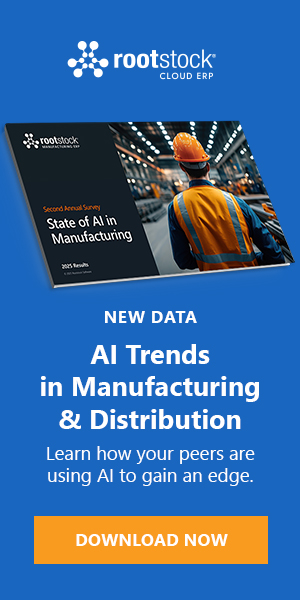Manufacturers and distributors are facing continued supply chain volatility as we pass the midpoint of 2025. Challenges include global disruptions, significant weather events, tariff uncertainty, and rising complexity. This volatility has emphasized the need for insight from advanced analytics that helps identify the most impactful areas to build resilient and efficient supply chains. To improve and augment decision-making around supply chains, companies are creating comprehensive Signal Chains, a term created by Rootstock in partnership with manufacturing organizations.
Signal Chains are comprised of real-time demand signals combined with those from supply chains such as inventory and raw materials, augmented by artificial intelligence (AI) to improve decision-making that aims to improve operations. For example, one Rootstock customer in the animal feed and pet food sector, using the vendor’s Cloud ERP built on the Salesforce platform, has demonstrated how they can better track rail deliveries, tying those to inventory and supply needs, with the real-time data tracked and accessed via their cloud systems.
Another Rootstock Cloud ERP customer recovered from a warehouse fire by reconfiguring Distribution Requirements Planning (DRP) within days, thanks to its cloud-based, unified dataset. The ability to bring together multiple sources of data accessible in real time—Signal Chains—allows companies to not only improve their factory operations but also recover from disasters faster and keep supply chain lines moving.
Predicting Future Supply Chain Disruptions with AI
Beyond improving current processes and handling acute disruptions, unified supply chain data also provides the opportunity to predict challenges before they even arise. For example, Rootstock’s AIRS, an AI built specifically for manufacturers and distributors, integrates ERP, CRM, PLM, and IoT data with the aim of enabling AI-powered predictive analytics, demand forecasting, and intelligent Material Requirements Planning (MRP).
This AI-powered prediction is designed to help companies anticipate and prevent supply chain disruptions before they occur, enabling manufacturers to adjust their plans to ensure their key factories are supplied and production is uninterrupted. With the power of Signal Chains, manufacturers are able to not just have access to real-time insight but get ahead of future issues.
What This Means for ERP Insiders
Unify supply chain processes and data to stay competitive. Manufacturers are already taking advantage of unified data sets to build Signal Chains that allow them to manage and predict disruption in their supply, demand, or production capacity. Those that are still using weeks-old, siloed data to make supply chain decisions have already fallen behind.
Identify the key data sources to support your Signal Chain. There are many sources of data that can contribute to an intelligent Signal Chain, including data from sales, customer orders, supplier portals, shop floor operations, shipping, and more.
Build the use case for decisions built on real-time data and predictive analytics. How would your factory operations be impacted if it could adjust to supply chain disruption immediately, before the disruption hits the shop floor?






